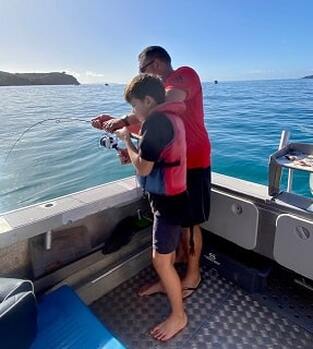|
Now that we’re well into winter it's a good idea to check over your boat, especially if it's gone unused for a while. Lack of use and the winter elements can cause serious damage to an outboard motor. To avoid any potential issues and possibly expensive repairs some form of maintenance is a must. If you’re likely to leave it over the next month or so, or if you find that your boat usually runs rough after winter, then you’ll benefit from following our the steps below. Winterize your boat in 6 simple steps1. Lubricate all moving items Lubricate all moving, twisting and turning items with oil-based lubricant to keep them from seizing up. Consider things like steering cables, remote control boxes and any hinges on the boat such as the dive ladder. Don’t forget your trailer too. Oil up winch handles, jockey wheel handles and pins. Basically, lubricate all items that you use to load your trailer to your vehicle for easy boating. 2. Run up your engine Connect up the flush cups and flush your engine out with fresh water to avoid salt build up. If there’s any salt left in the engine it will corrode your engine out over winter. Once flushed, then fully drain your cooling system to prevent any damage in case the water freezes. Tilt your engine all the way down to ensure water drains completely and leave it like this over the winter months. Wondering how long you can run a boat on ear muffs? We recommend 5 to 10 minutes. 3. Check your battery charge Like your engine, batteries also work better when they’re used regularly and lack of use will cause damage to the battery and affects its lifespan. Keep batteries charged regularly over the winter by starting your outboard every few weeks. Alternatively, you could look at investing in a trickle charger which slowly charges your battery at the same rate as the charge is drained. See our boat battery health blog for more tips on preserving your battery. 4. Remove your propeller It’s a good idea to check for damage on your prop shaft that could worsen if left unchecked. Just remove the split pin and undo the nut and slide the propeller off the shaft. Look for nylon and braid wrapped around the shaft which can cause damage to the seals, allowing water to enter. 5. Drain your fuel tank Either completely top up your fuel tank, or drain it completely but don’t leave the tank partially topped up as this allows condensation to form. We think the safest option is to drain fuel however, as motors always run best with fresh fuel and you risk fuel degradation leaving it in there. If the fuel has sat around for more than 3 months - replace it. If you’d prefer to keep the tank fill, we recommend using a fuel stabiliser. 6. Check water fuel separators To prolong the life of your fuel filters make sure you drain any water that’s sitting inside. You simply unscrew the white canister off, or drain the back drain screw underneath and let the water drain out. Remember to grab an old container to catch the liquid first. Doing this regularly also helps keep water out of your engine. Use it or lose itOutboard motors like to be used and I’d say 90% of the repairs we perform are caused by lack of use. Plus, Winter can lend itself to some beautifully calm days. We recently hooked up on some snapper and kahawai with the family. So my best advice is to pick your days and keep boating and fishing over winter for yours and your boat’s health! If you’re planning on giving your boat a holiday for the rest of winter just give it a bit of love now and it be good to go come Spring. Or, if you’re planning on heading out for some fishing missions, we’ll see you out there! Want to keep learning?Comments are closed.
|
Location |
Copyright © 2024 GT Marine 2010 Limited







27/6/2022